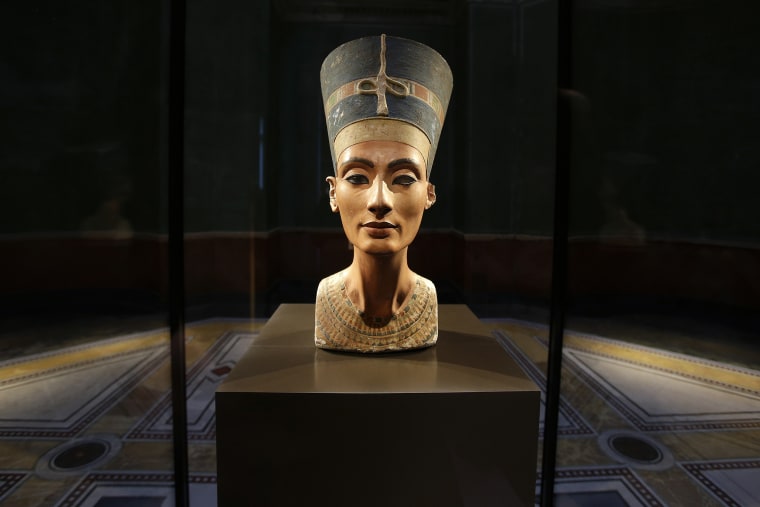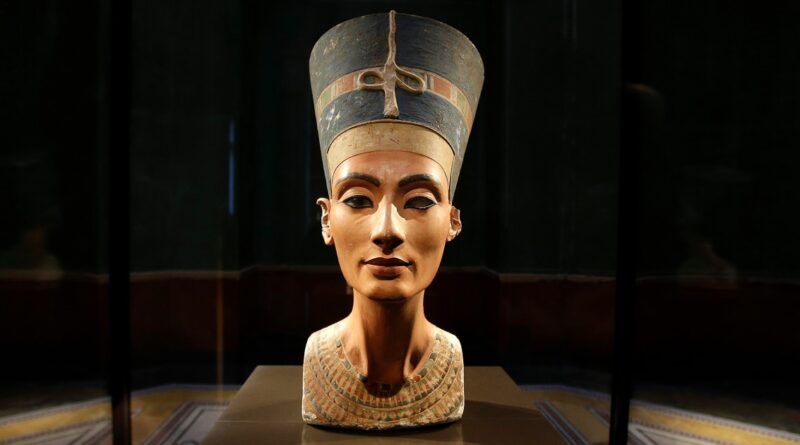Return Nefertiti bust, Egypt archaeologist urges Berlin museum in petition
CAIRO, Egypt — The splendor of the Queen of the Nile is not the star of any Egyptian museum, but of the Neues Museum in the German capital Berlin, where the 3,400-year-old bust of Nefertiti is admired by thousands every day in a domed hall.
Now a campaign led by Zahi Hawass, a renowned archeologist and Egypt’s former antiquities minister, aims to change this and end the country’s decadeslong struggle to bring the queen home, along with dozens of other historical artifacts.
“This bust, remarkable and unrivaled in history for its historical and aesthetic merit, is now in Germany, but it is time for it to come home to Egypt,” Hawass said in a news release Saturday announcing the launch of a petition calling for its return.
“Considering her bust is one of value that tells the story of our common humanity,” he said, “that story can be told from its origin country, where more than a billion tourists visit Egypt and witness historical evolution at its finest.”

The painted limestone bust was uncovered by a German archeological mission in 1912 at Tell el-Amarna, a site about 185 miles south of Cairo that was the capital of Nefertiti’s short-lived husband, the 18th dynasty Pharaoh Akhenaten. It was transported to Berlin a year later.
Akhenaten, also known as the heretic king, came to promote the worship of Aten over other Egyptian gods during his reign, which lasted until 1335 B.C. and saw a radical transformation of Egyptian art.
But the bust was not publicly displayed until more than a decade later alongside other Amarna finds. It was hidden away during World War Two and later moved to the Neues Museum for its reopening in 2009.
“Egypt has been deprived of the bust for 102 years,” Hawass said. “Nonetheless, Egypt deeply appreciates the care and efforts undertaken by the government of Germany to preserve and display the 3,400-year-old painted limestone bust of the Queen.”
At a news conference, Hawass also spoke of the previous attempts to retrieve Nefertiti, including over a decade ago when he organized a similar petition. He said the bust was removed from Egypt “against the letter and the spirit of the Egyptian laws in effect at the time.”
In Berlin, some have dubbed the queen the city’s Mona Lisa and she has a green and blue room of her own in the museum.
The Neues Museum did not respond to NBC News’ request for comment.
Egypt’s campaign to repatriate its artifacts has seen thousands of antiquities returned to the country.
Last year, an ancient wooden sarcophagus at the Houston Museum of Natural Sciences was returned to Egypt after U.S. authorities deemed it was stolen. In 2021, Cairo succeeded in getting back 5,300 stolen artifacts from around the world, the Associated Press reported, amid government efforts to stop trafficking of its antiquities.
Other countries have also called for the return of their artifacts, which they say are a symbol of colonialism.
In July, more than a dozen Cambodian artifacts were returned by the New York Museum of Metropolitan Museum of Art.
Hawass said in a news conference Saturday that he is not calling for the repatriation of artifacts taken out of Egypt legally, rather the “three main beautiful objects” that were removed illegally from the country, including the Rosetta Stone, Dendera Zodiac and Nefertiti’s bust.
Hawass has called for supporters to sign the petition on his website, where a campaign to return the Rosetta Stone and Dendera Zodiac launched in 2022 has gathered more than 2.2 million signatures.
“Museums that continue to display these artifacts and refuse to return them only continue to participate in imperialism,” he says on his website.
Bearing inscriptions in several languages, the Rosetta Stone is considered key in understanding hieroglyphic writing and is one of the most visited artifacts at the British Museum in London.
The museum has maintained its resistance and says the stone was transferred to London upon the Treaty of Alexandria in 1801 after the defeat of Napoleon, whose army is believed to have found the stone in Egypt.
The Dendera Zodiac, a giant stone diagram from an Egyptian temple dating back to mid-1st century BC is currently housed in the Louvre in Paris.
Charlene Gubash reported from Cairo, Egypt and Mithil Aggarwal reported from Hong Kong.





